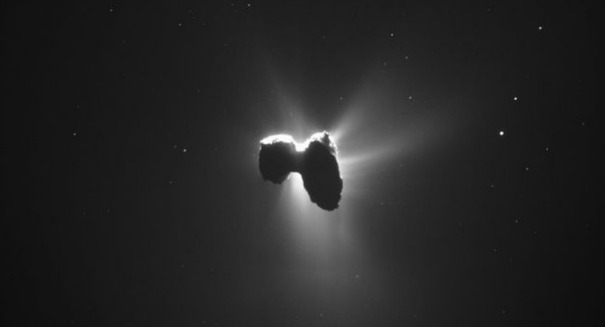
An amazing discovery on Comet 67P could change our understanding of life as we know it.
An incredible discovery on Comet 67P/Churyumov-Gerasimneko could totally change our understanding of life on Earth.
The European Space Agency’s Rosetta spacecraft has just revealed evidence of the presence of glycine, an ESA statement reads.
That’s a big deal because glycine is what living organisms use to make proteins, providing strong evidence that a long-held hypothesis that comets and asteroids brought the building blocks for life to ancient Earth billions of years ago.
It’s been a year and a half since Rosetta dropped the Philae lander on the surface of the comet in a historic event, and this new discovery could be the biggest one since that happened back in November 2014. This discovery has huge implications for both life on Earth, as well as the likelihood that life has evolved nearby.
Scientists actually detected glycine on samples from a comet that crashed into Utah that was discovered in 2006. But there were concerns about contamination, so scientists had to essentially throw out those results.
In addition to the glycine, scientists also found phosphorus on Comet 67P, another major discovery that is an essential element for living organisms. It’s the first time they’ve found that substance on a comet.
“This is the first unambiguous detection of glycine at a comet,” says Kathrin Altwegg, principal investigator of the ROSINA instrument that made the measurements, and lead author of the paper published in Science Advances today. “At the same time, we also detected certain other organic molecules that can be precursors to glycine, hinting at the possible ways in which it may have formed.”
“We see a strong link between glycine and dust, suggesting that it is probably released perhaps with other volatiles from the icy mantles of the dust grains once they have warmed up in the coma,” she adds. “Glycine is the only amino acid that is known to be able to form without liquid water, and the fact we see it with the precursor molecules and dust suggests it is formed within interstellar icy dust grains or by the ultraviolet irradiation of ice, before becoming bound up and conserved in the comet for billions of years.”

Leave a Reply